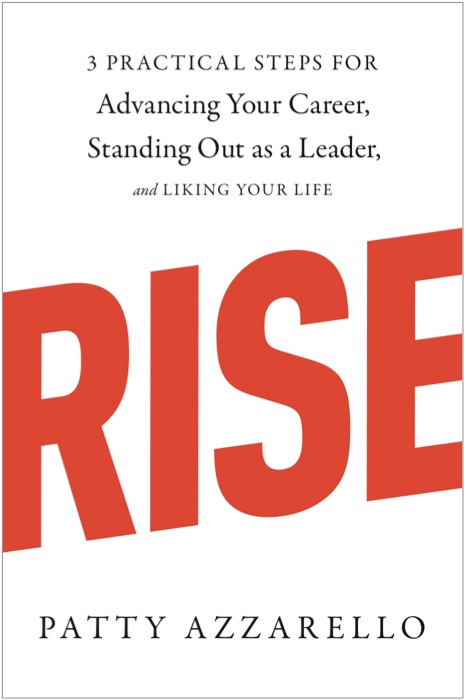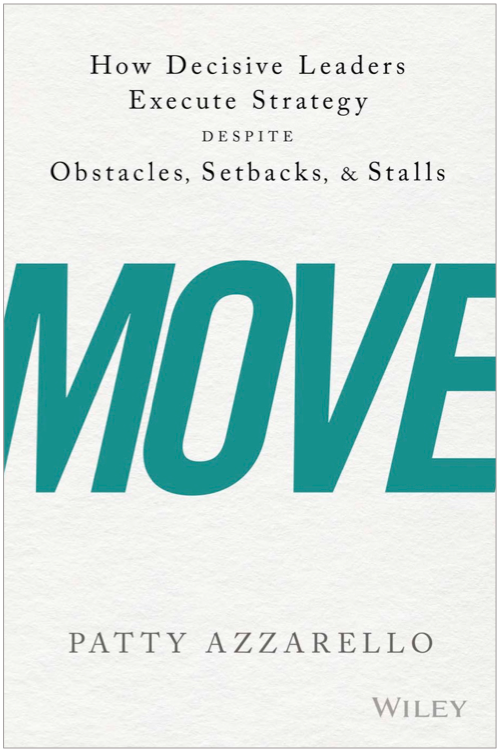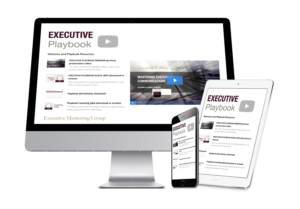High Performance
This idea of Leading a High Performing Team is one of those things that sounds good on the surface…but what does it really mean in a practical sense?
Think about this in your world. What does it mean to you?
What would higher performance look like in your team?
What different things would you see if they were performing at a higher level?
What bigger things could you do if you team was performing at a higher level?
4 Key Leadership Behaviors for a Higher Performing Team
As I’ve built and worked with my own teams, and worked with teams in my client organizations, I have noticed 4 things that leaders do that dramatically increase the performance of their teams.
1. They Clarify the Strategy. A lot
2. They Make Sure They Have the Right Team
3. They Make the Hard Make Resource Trade-offs Decisively
4. They Personally Engage People at all Levels in the Organization.
THE EXECUTIVE PLAYBOOK
This month the Topic in my Executive Mentoring Group is Leading High Performing Teams.
As part of this program there is an Executive Playbook which includes a webinar.
Here are some of the things I talked about in the webinar.
1. Clarify the Strategy. A lot.
Many leaders state their strategic intention, and then expect that the whole organization will be able to revamp and self-optimize to start executing on the new stuff. It does’t work this way.
This “executive announcement” of the strategy leaves people waiting for more information, not moving forward.
The most effective executives clarify the strategy in a way that people can act on it with confidence.
For example, many new strategies take the form of: We will create a new product line, which will replace our current legacy product line in 2 years. The world will cheer. We’ll be rich.
Great. Now hop to it. (To what, exactly?)
People in the organization are left scratching their heads. They understand the WHY of the strategy, and the end point, but they are confused and stressed out when the executives want to see fast progress, because they don’t know what to work on right now.
They still have responsibilities toward the old product line, that no on has absolved them of, and customers are still buying it. So what should they do? They wait for more information.
When people don’t know what they should be working on, performance suffers.
A simple timeline could improve performance a lot — A timeline that answers questions like:
When does the work stop on the current product line? Does all of it stop? Or does only some of the work stop? Which work? Immediately? When?
Will both products exist in the market? For a period of time? Indefinitely?
When will we stop selling the current product line if customers still want it?
Will existing customers stay on the existing product line? or will they move to the new one. When?
How do we prioritize customer issues/opportunities on the legacy product line vs. working on the new one before we can sell the new one?
In the playbook I talk about several timeline techniques that you can use to chart a clear course for your organization that ensures that people know what to do, that they believe you are serious about the new strategy, and that you don’t run out of time or lose momentum along the way.
HIGHER PERFORMANCE = People are not confused or waiting. They understand the strategy and timeline, and specifically how their work fits in.
2. Make Sure You Have the Right Team
There is no effective antidote for the wrong team.
The challenge is that when you start something new, you are in the first moments starting it with the existing team.
The best leaders do a frank assessment of the team needed for the future and build the team they NEED.
Some of the existing team will likely be the right team for the future demands of the business, but some will likely not be the right people to personally lead the new strategy.
What I talk about in the Playbook is how to create your “Ideal, Blank-sheet, Org chart”, and then how to evolve your team toward that ideal.
One of the biggest things you can do to increase the performance of your team is to make sure that every role is defined for the future, and that every person is in a role that they are well suited for, and motivated to lead in.
HIGHER PERFORMANCE = The right people in the right jobs.
3. Make Resource Trade-offs Decisively
The other common thing that stalls great strategies out of the gate is that people are simply too busy doing current stuff to do (or even think about) the new stuff.
There are very rarely new resources that fund new things 100%, so the only way to get there is to make some resource trade-offs.
Many leaders think that since they were VERY CLEAR ABOUT HOW IMPORTANT THE NEW STRATEGY IS, that the organization has internalized it, and they expect that the organization itself will make the necessary tradeoffs.
THIS NEVER HAPPENS.
Getting super clear on resource shifts causes uncomfortable conflict, so people avoid it like the plague.
But addressing this conflict head on, and clearly assigning resources that match the strategy, is the only way to ensure that progress is actually being made on the strategy.
In the playbook I outline how decisive leaders deal with this head on, and develop the courage to make the hard resource choices and clearly communicate them.
Lack of resource clarity causes endless confusion and debate which drags performance way down.
HIGHER PERFORMANCE = Resource commitments that clearly match the strategy. People not waiting or arguing about resources, or doing the most important stuff in their spare time.
4. Personally Engage People at all Levels in the Organization
You can lead a transformation from the top, but you can’t DO a transformation from the top. You need your whole organization to be personally engaged and motivated if you want them to be a high performing team.
Engagement is personal.
True Engagement is about each individual having a reason to personally care and be motivated to do what the business needs.
In the playbook I talked about how to rethink the idea of communication and turn it instead into conversation.
Conversation = Engagement. Think about it this way…
A person would need to think about and internalize your new strategy if they need to participate in conversation about it — that’s the foundation of engagement.
If you are only just telling, people are not engaging.
In the playbook there are conversation scripts and tools which will help you get your team having the kinds of conversations that will build trust and confidence, increase motivation and commitment and get them moving your strategy forward.
HIGER PERFORMANCE = Everyone Engaged.
Get the Executive Playbook
If you want some practical tools to increase your team’s performance in these 4 areas, get my Executive Playbook on Leading High Performing Teams.
It includes a streaming webinar and a workbook with tools templates and scripts.
For the rest of October you can still get the Executive Playbook on Leading High Performing Teams for FREE:
And you can get it for FREE with a Trial Membership.
(No risk: You can cancel at any time)
This is one of many Executive Playbooks in my Executive Mentoring Group.
You can start your Free Trial here.

Patty Azzarello
Patty is available to speak at your company, annual meeting, or customer event. She can also deliver a custom workshop on Leadership or Strategy Execution for your leadership team. Contact Patty.
Or if you would like some personal help on your own professional development, check out her Executive Mentoring Group. It’s filled with insights, resources and support to build your executive confidence, advance your career, and includes direct mentoring from Patty.
MORE ABOUT PATTY:
Patty Azzarello is an executive, best-selling author, speaker and CEO/Business Advisor. She became the youngest general manager at HP at the age of 33, ran a billion dollar software business at 35 and became a CEO for the first time at 38 (all without turning into a self-centered, miserable jerk)





